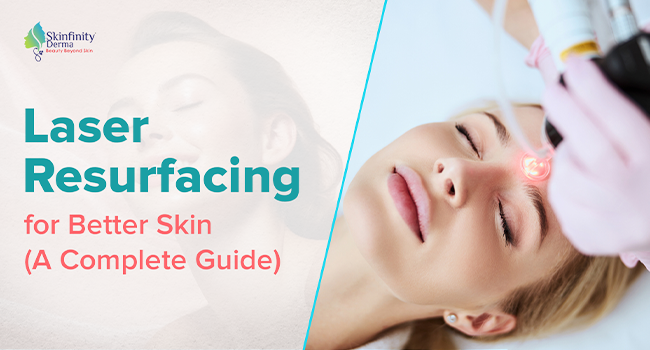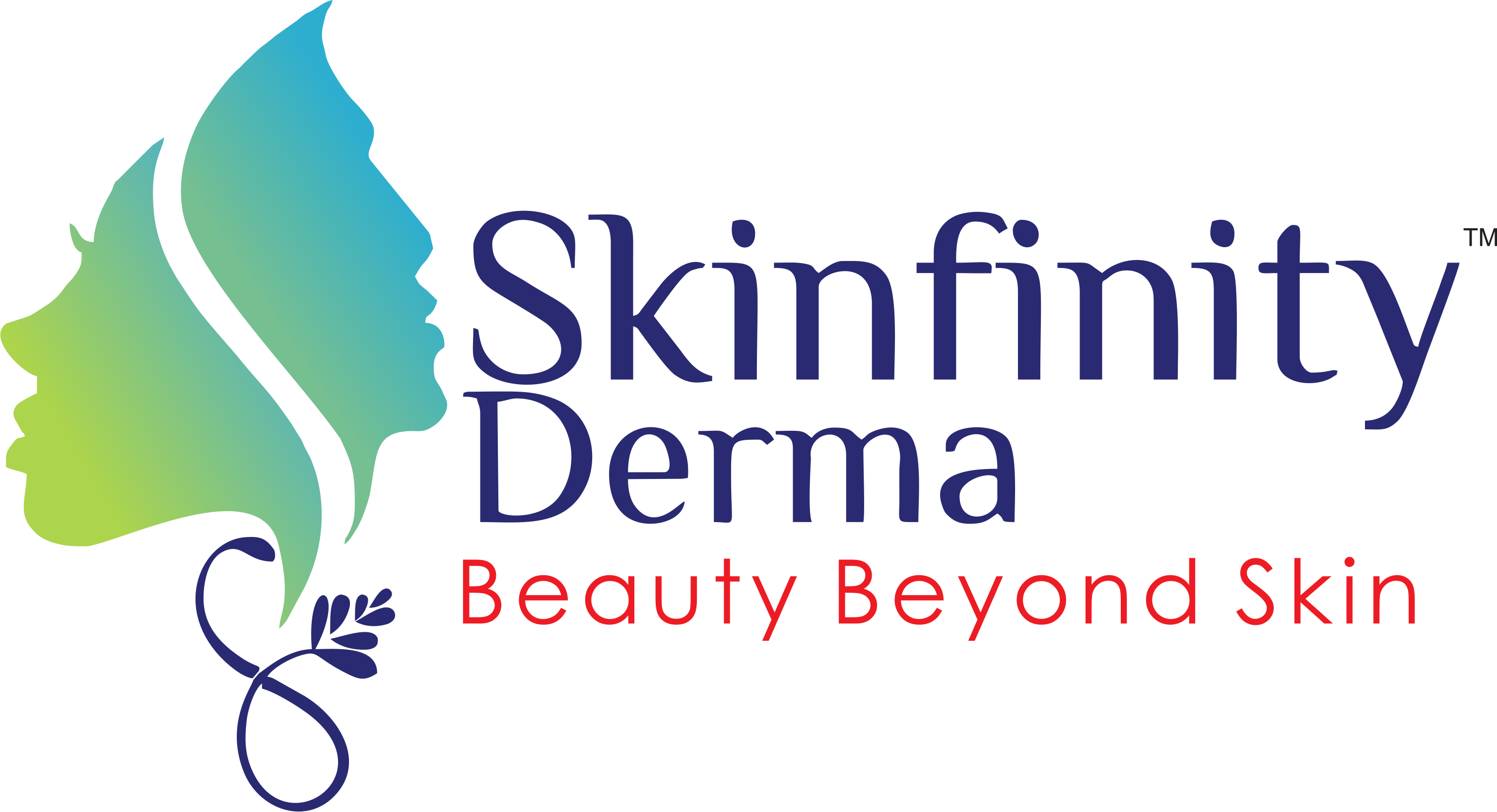Laser resurfacing, a revolutionary skin treatment, has gained popularity for its ability to rejuvenate skin and address various skin concerns. Understanding this procedure in detail can help individuals make informed decisions about their skincare. Here are nine critical aspects to know about laser resurfacing.
What is Laser Resurfacing?
Laser resurfacing is a dermatological procedure that uses focused light beams to remove the outer layers of skin. It's designed to improve skin texture, tone, and appearance. There are two main types: ablative and non-ablative lasers. Ablative lasers are more intense and remove layers of skin, while non-ablative lasers target the dermis to promote collagen production without removing the top skin layer.
There are two main types of laser resurfacing:
Ablative Laser Resurfacing: This type involves the use of a laser to remove the outer layers of the skin (epidermis) and heat the underlying skin (dermis). This encourages the growth of new collagen fibers. As the treated area heals, the new skin that forms is smoother and tighter. Ablative lasers are used for more intense treatments and can address deeper wrinkles, scars, and other significant skin imperfections. The recovery time for ablative laser resurfacing is typically longer due to the more extensive nature of the procedure.
Non-Ablative Laser Resurfacing: This type is less invasive and involves lasers that work by heating the underlying skin tissue without harming the surface. This stimulates collagen production and new skin cell growth, leading to improved skin tone and texture. Non-ablative laser treatments typically have a shorter recovery time compared to ablative treatments but might require multiple sessions to achieve the desired results.
Conditions Treated by Laser Resurfacing
Laser resurfacing is a versatile and effective cosmetic procedure that addresses a wide range of skin issues. By using concentrated beams of light to remove damaged skin layers, it rejuvenates and improves skin appearance. Here’s a detailed overview of the conditions that laser resurfacing can treat:
1. Wrinkles and Fine Lines:
-
Treatment Area: Commonly used to treat wrinkles around the eyes, mouth, and forehead.
-
Procedure Efficacy: Laser resurfacing removes the outer layer of skin, smoothing out the surface, and promotes collagen production, which helps in reducing the appearance of fine lines and wrinkles over time.
2. Acne Scars:
-
Scar Improvement: Particularly effective in reducing the appearance of acne scars, making them less prominent.
-
Skin Texture: Improves overall skin texture, which can be uneven due to past acne.
3. Sun Damage:
-
Reversing Sun Effects: Helps in reversing the signs of sun damage, including rough skin texture and uneven pigmentation.
-
Skin Health: Regular treatment can also improve the overall health of sun-damaged skin, potentially preventing further deterioration.
4. Uneven Skin Tone:
-
Tone Correction: This can help in balancing skin tone, reducing issues of hyperpigmentation, and achieving a more uniform complexion.
-
Treats Hyperpigmentation: Effective in addressing dark patches or spots caused by hormonal changes, such as melasma.
5. Age Spots:
-
Spot Reduction: Targets and diminishes age spots, which are often a result of sun exposure and aging.
-
Skin Rejuvenation: Along with reducing age spots, it contributes to a more youthful overall appearance.
6. Enlarged Pores:
-
Pore Size Reduction: By stimulating collagen production, laser resurfacing can tighten the skin and reduce the appearance of enlarged pores.
-
Skin Smoothing: This tightening effect contributes to a smoother skin surface.
7. Certain Precancerous Skin Growths:
-
Growth Removal: This can be used to remove actinic keratosis, a common precancerous skin growth that may appear as rough, scaly patches.
-
Cancer Prevention: By treating these growths, laser resurfacing can play a role in preventing the development of skin cancer.
The Procedure of Laser Resurfacing
The laser resurfacing procedure involves:
1. Consultation and Assessment:
-
Initial Meeting: The process begins with a consultation with a dermatologist or cosmetic surgeon. This is a crucial step where the patient discusses their skin concerns, medical history, and treatment goals.
-
Skin Assessment: The specialist assesses the patient’s skin type, condition, and areas that need treatment. This assessment helps in determining the suitability of laser resurfacing for the patient.
-
Discussion of Goals: The patient and dermatologist discuss the expected outcomes, possible risks, and benefits of the procedure.
-
Customized Treatment Plan: Based on this information, the dermatologist devises a personalized treatment plan.
2. Pre-Treatment Preparations:
-
Skincare Routine: In the weeks leading up to the procedure, patients might be advised to follow a specific skincare regimen. This may include products such as retinoids, moisturizers, and sunscreen to prepare the skin for laser treatment.
-
Medications: Patients may need to avoid certain medications and supplements that can affect healing, such as aspirin, ibuprofen, or vitamin E.
-
Avoiding Sun Exposure: It’s crucial to avoid sun exposure and tanning before the procedure as it can increase the risk of complications.
3. Application of Anesthetic:
-
Topical Anesthetic: For non-ablative laser resurfacing, a topical anesthetic cream may be applied to the treatment area to minimize discomfort.
-
Local or General Anesthesia: Ablative laser procedures, which are more intensive, may require local anesthesia with sedation or, in some cases, general anesthesia, especially if a large area is being treated.
4. The Laser Resurfacing Procedure:
-
Procedure Duration: The duration of the laser treatment can vary significantly, from 30 minutes for small areas to up to two hours for larger or multiple areas.
-
Laser Application: The dermatologist uses a laser device to send concentrated beams of light to the targeted areas. This removes damaged skin layer by layer.
-
Ablative vs. Non-Ablative: With ablative lasers, the outer layer of the skin (epidermis) is removed, and the underlying skin (dermis) is heated. Non-ablative lasers work by heating the dermis without removing the top layer of skin.
Benefits of Laser Resurfacing
Laser resurfacing offers multiple benefits:
1. Reduction of Fine Lines and Wrinkles:
-
Targeted Treatment: Laser resurfacing is highly effective in reducing fine lines and wrinkles, especially around the eyes, forehead, and mouth.
-
Collagen Stimulation: The procedure stimulates collagen production, leading to naturally smoother, firmer skin over time.
2. Improved Skin Texture and Tone:
-
Uniformity: It helps in achieving a more uniform skin texture, smoothing out rough areas and improving overall skin quality.
-
Tone Correction: It can correct uneven skin tone, including reducing the appearance of sunspots and age spots, leading to a more even complexion.
3. Treatment of Sun Damage:
-
Reversing Sun Effects: Helps in reversing the signs of sun damage, including rough skin texture and uneven pigmentation.
- Skin Health: Regular treatment can also improve the overall health of sun-damaged skin, potentially preventing further deterioration.
4. Scar Treatment:
-
Acne Scars: Particularly effective in reducing the appearance of acne scars, making them less noticeable.
-
Surgical and Injury Scars: It can also smooth out other types of scars from surgery or injuries.
5. Reducing Hyperpigmentation:
-
Pigment Correction: Helps in correcting hyperpigmentation issues such as melasma or age-related dark spots.
-
Enhanced Skin Clarity: The overall clarity of the skin is enhanced by evening out the skin tone.
Risks and Side Effects of Laser Resurfacing
While laser resurfacing is a highly effective cosmetic procedure for improving skin appearance, it is not without potential risks and side effects. It's important for individuals considering this treatment to be aware of these possibilities. Here's a detailed look at the risks and side effects associated with laser resurfacing:
1. Redness, Swelling, and Itching:
-
Common Reactions: Post-treatment, it's common to experience redness and swelling in the treated area, similar to a mild sunburn. Itching may also occur during the healing process.
-
Duration: These symptoms can last from a few days to several weeks, depending on the depth and extent of the treatment.
2. Acne Breakouts or Skin Rashes:
-
Potential Breakouts: Some patients may experience acne flare-ups or small white bumps (milia) on the treated skin during the healing phase.
-
Skin Sensitivity: Temporary rashes can also occur, especially in individuals with sensitive skin.
3. Changes in Skin Pigmentation:
-
Hyperpigmentation: There is a risk of the skin becoming darker than normal (hyperpigmentation), especially in individuals with darker skin tones.
-
Hypopigmentation: Conversely, ablative laser treatments can sometimes lead to hypopigmentation, where the treated skin becomes lighter than surrounding areas.
4. Scarring:
-
Rare but Possible: While rare, there is a risk of scarring, particularly if the post-treatment care instructions are not followed correctly.
-
Pre-existing Conditions: Individuals with a history of keloid or hypertrophic scars may have an increased risk.
5. Infection:
-
Bacterial Infections: The treatment can occasionally lead to bacterial infections if the treated area is not properly cared for.
-
Viral Infections: Patients with a history of herpes simplex around the mouth may experience flare-ups of cold sores or fever blisters. Prophylactic antiviral medication may be prescribed to prevent this.
Choosing the Right Professional like Skinfinity Derma
Selecting an experienced and qualified cosmetic surgeon or the Best Dermatologist in Gurgaon like Skinfinity Derma is critical. At Skinfinity Derma, we also embrace the latest in cosmetic dermatology, offering a variety of services including Botox, fillers, and chemical peels, tailored to meet your unique needs and aesthetic goals. Led by a team of highly experienced dermatologists and skin care specialists Dr. Ipshita Johri, we offer personalized solutions for all your skin concerns.
How to Reach Skinfinity Derma?
If you are looking for Skinfinity Derma for the best laser resurfacing or any other dermatological needs, you can find us at two convenient locations in Gurgaon and Noida.
For our Gurgaon clinic, head to our modern facility located at:
2nd Floor, Building No. SP1, Sector 28, Golf Course Road, Gurugram, Haryana 122002. Should you have any queries or wish to book an appointment, please reach out to us via email at skinfinitygurgaonclinic@gmail.com or skinfinitygurgaon@gmail.com. Alternatively, you can call us at +91 85911 10110 for direct assistance.
In Noida, our clinic is situated at:
Skinfinity Derma Private Limited, Skin, Hair and Laser Clinic, Basement Floor, House B-1, Sector 36, Near Logix Mall, Noida, Uttar Pradesh 201303. For inquiries or to schedule a consultation, email us at skinfinityderma@gmail.com or info@skinfinityderma.com. You can also contact us at +91 9899961629 or +91 85911 10110.
Conclusion
Laser resurfacing is an effective solution for enhancing skin appearance and health. Before undergoing treatment, understand the procedure, its benefits, risks, and necessary care. With the right professional guidance and care, laser resurfacing can significantly improve skin quality, leading to a more youthful and rejuvenated appearance.

